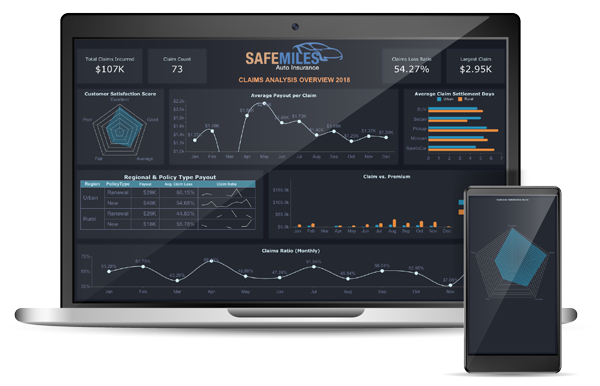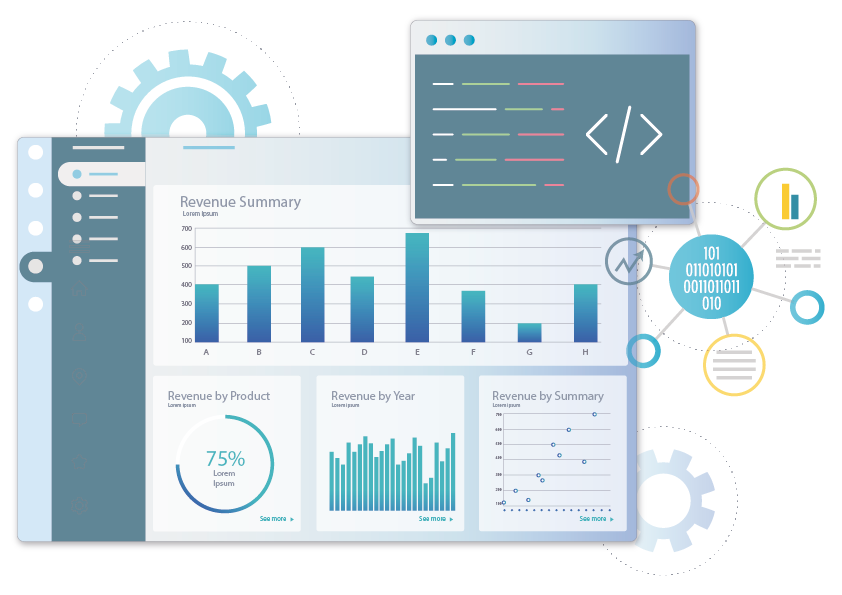The amount of data organizations collect, process, and store today is staggering. This abundance of data creates both opportunities and challenges. Data can unlock significant insights to help businesses make more informed decisions, but it can also create a big burden for IT and data analytics teams.
Self-service business intelligence (BI) solves this challenge by empowering users to access and analyze the data they need without having to send every request to IT teams.
Self-Service Business Intelligence Reduces Workloads While Empowering Users
Traditional BI platforms required sophisticated users. Each time an employee had questions about data, needed a report, or updates to an existing report, they were forced to reach out to the IT team or data analysts. This often created a backlog for IT teams and delays for employees in getting the information they needed.
Here’s a quick rundown of the differences between traditional BI tools and self-service BI tools and how they impact the IT data team.
| TRADITIONAL BI | SELF-SERVICE BI |
| Users gather requirements | IT deploys self-service BI tools |
| Submit requests to IT teams | Users access data directly |
| IT extracts data and cleans it | Users drill down to detailed data |
| IT creates data models | Users decide what data to include |
| Users review data or request changes | Users create data models or dashboard/report |
With self-service BI tools, managers and frontline employees gain greater access to the data they need.
Faster Access
Self-service BI provides instant access to real-time data, eliminating the time it takes for IT teams to work through their long queue of queries. This helps facilitate faster — and better — decision-making.
With traditional BI tools, users ask for analysis. BI and data teams have to find and extract the data from data lakes or warehouses, clean and prep it, and then create specific queries to produce the analytics. Then, they may have to create and design a dashboard or report to display it. Consider the time it takes to do that compared to self-service BI which provides the data without all that work.
Reduced IT Workload
Data analysts and IT teams can focus on higher-level work rather than routine assignments. This reduces their workload and speeds up data delivery to end users. Once embeddable BI is integrated, dashboards are easy to build, and users can visualize the data they need at a glance or drill down to specific data points.
Roll-Up Reporting
Self-service BI can also navigate between disparate platforms. By aggregating data across multiple systems, users get a single source of truth for self-service BI dashboards and reports while eliminating the need for IT teams to find and pull data into a comprehensive report.
Deeper Data Analysis
Many times, the first look at data analysis creates more queries. Much of the IT data requests come from the back and forth with users that may not have asked for the right data the first time, or find insights that require a deeper dive.
When users can see the data themselves, they can drill down and find the answers themselves, saving everybody time. It also reduces errors from misinterpreting data.
More Precise Deliverables
When users do need help, self-service BI also creates more precise requests. This helps data teams create more precise deliverables to answer specific questions, making specific data requests more impactful.
Enhanced Collaboration
With self-service BI tools, users can share links to dashboards, visualizations, and reports with coworkers or clients to further collaboration. This helps establish a more data-driven culture within organizations as users can put data at the heart of their strategy and track performance against key metrics without having to ask IT teams to create reports.
Changes the Focus for BI Teams
Because anyone can see and analyze data, it enables IT teams to shift their role from fulfilling requests to providing expert guidance. Instead of creating manual reports, they can help users deploy best practices while focusing their work on the most significant and pressing high-level business concerns.
Embeddable Self-Service BI Tools Make Data Analytics Easier for Everyone
Wyn Enterprise is a business intelligence tool that empowers users with self-service BI, enabling them to quickly find the important insights they need with your data. Instead of tying up IT or data analytics teams with requests and waiting for results, users can get the information they need by embedding data in your existing products. This makes it easy to view dashboards and reports within the platforms they’re familiar with and gives them the ability to drill down to data as needed. Users can also build dynamic reports with real-time data with intuitive tools and no coding necessary.
Wyn Enterprise’s unique licensing model provides the lowest total cost of ownership for an embeddable BI platform with no per-user fees and no data limits to optimize your ROI.
Try Wyn Enterprises today with a free 30-day test drive and see how it works with your data and your security solutions. You can also contact our team of BI experts to discuss your requirements.
Incase you missed the first part of this blog series, click below!
The Impact of Business Intelligence on IT: Part 1, Freeing IT Resources
And if you'd like to jump directly to the third part, click below!
The Impact of Business Intelligence on IT: Part 3, Helping CIOS Optimize






























